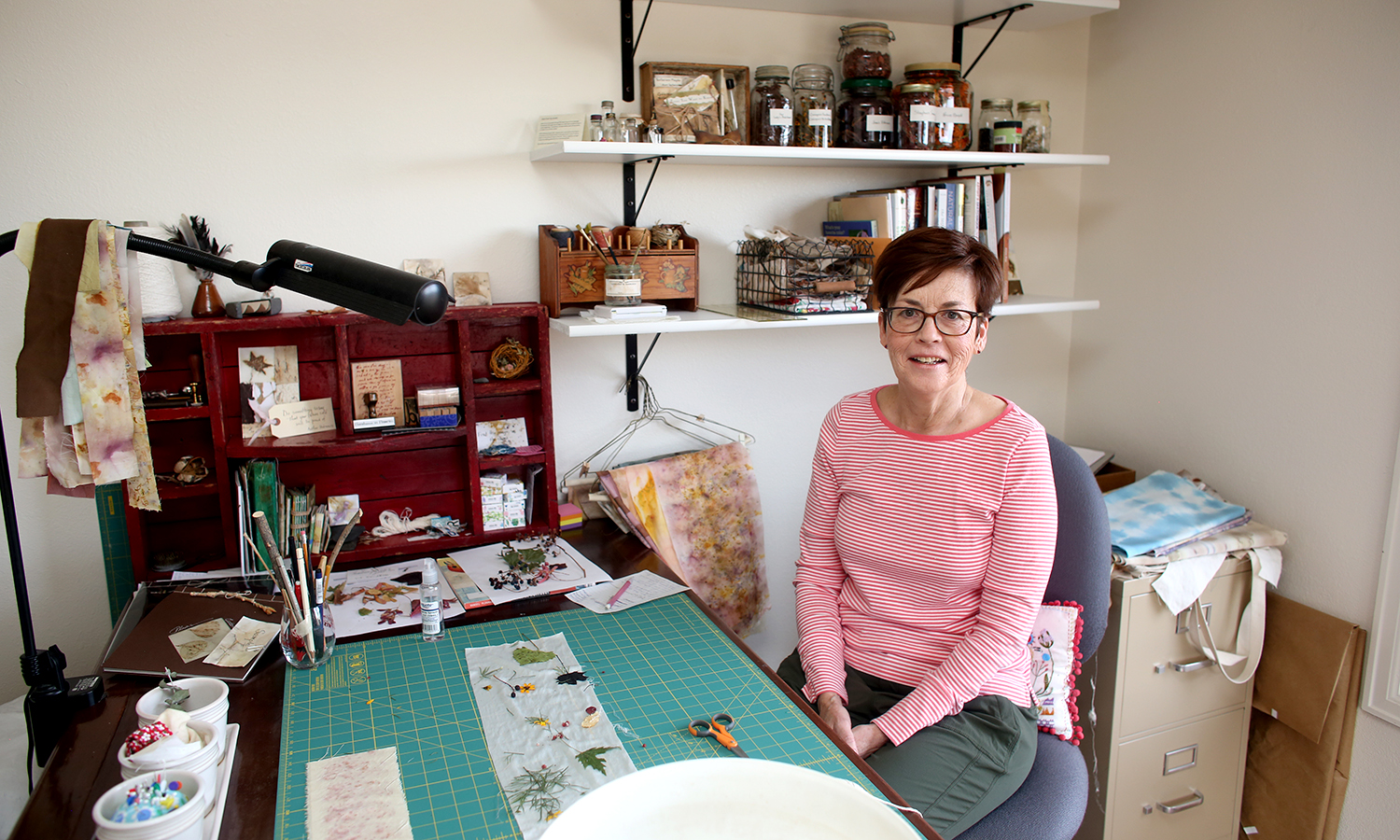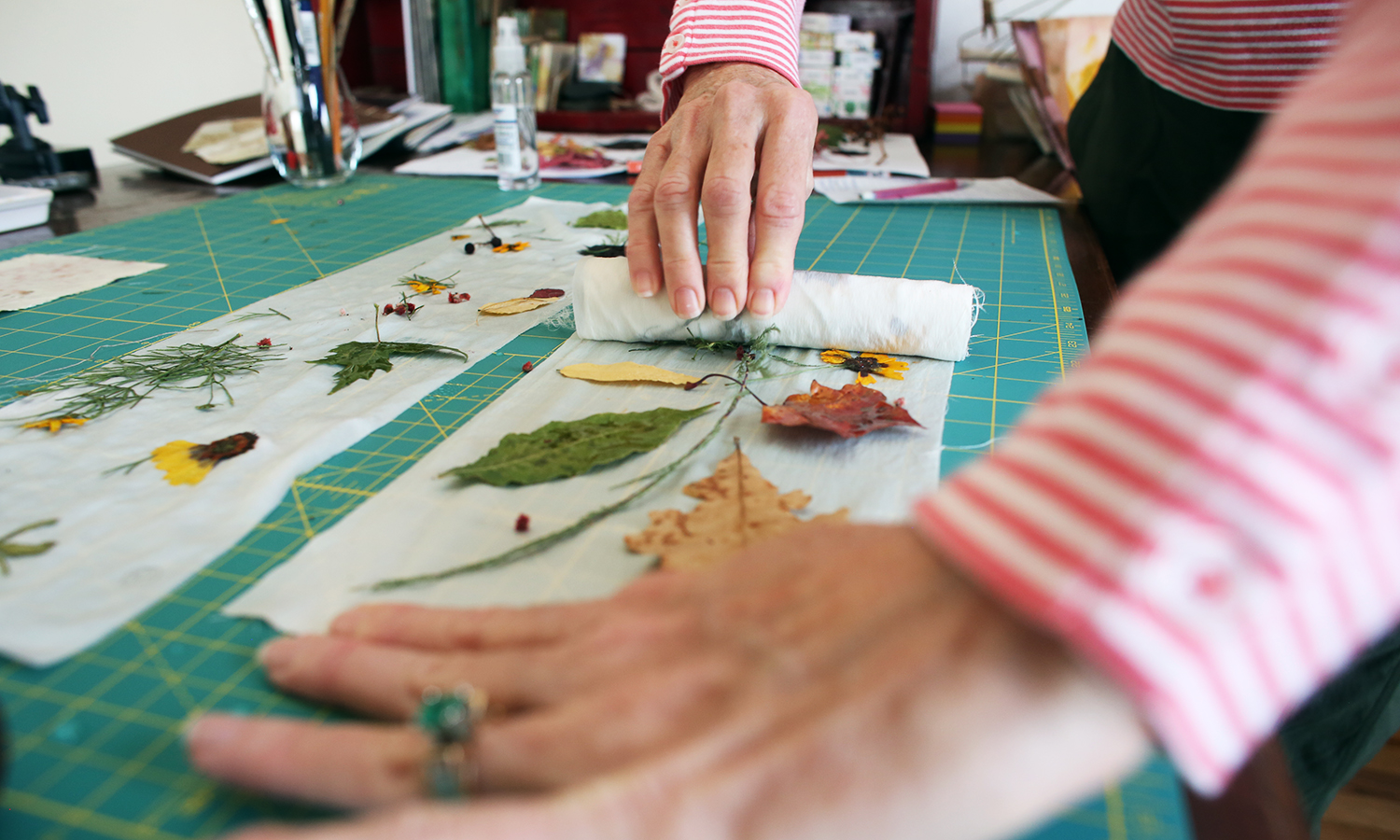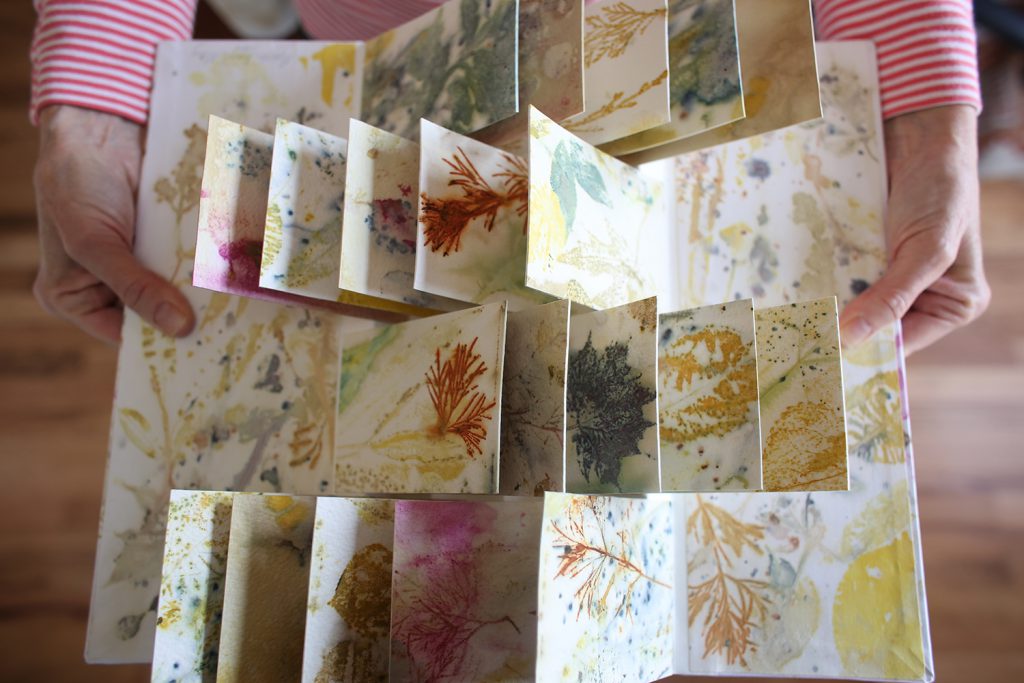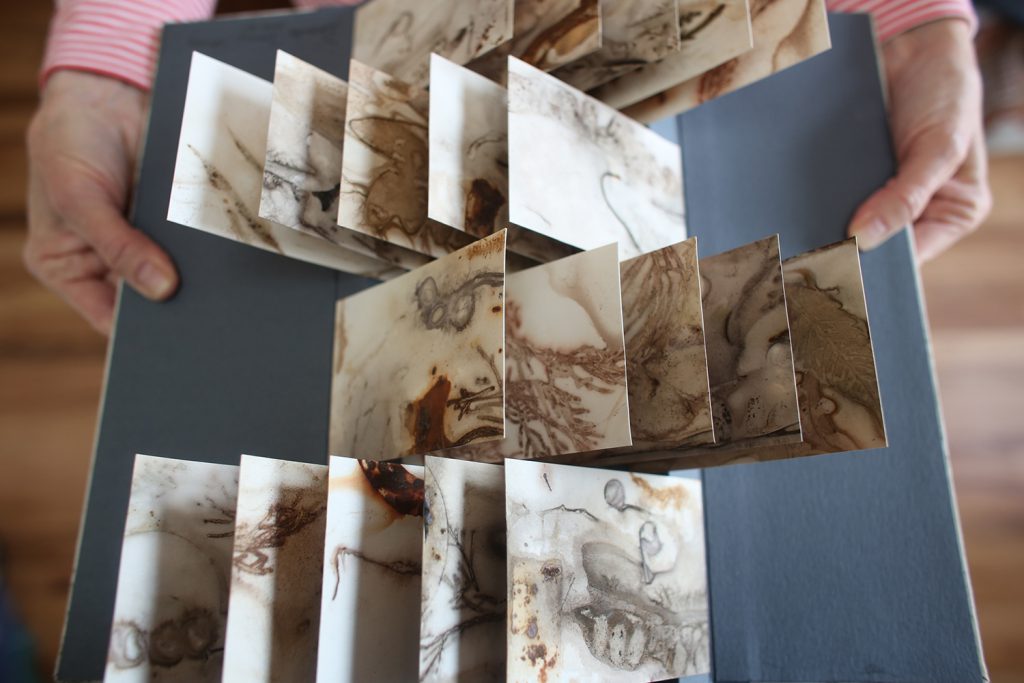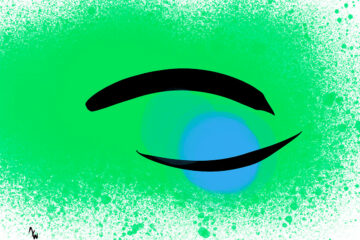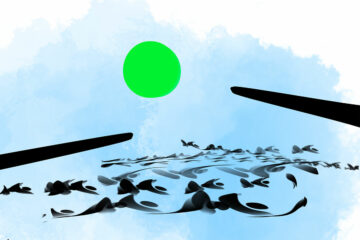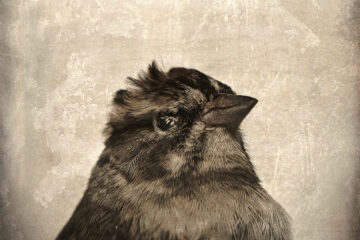Peggy Dlugos takes me to a back corner of her home, to a just-right cozy and tidy work space. A pair of full-sized windows on both walls let in light, awareness of nature, and views of Garden of the Gods.
“This is where I am most of the time, during the winter,” she says. “But summer time, I’m out there. I consider all of that out there to be my studio.
“When I’m taking a walk, when I’m dyeing out on the deck or working in the garden, that’s all studio time to me. This (room) is kind of like the master planning (space). But everything happens out there.”
Peggy, 61, is a fiber artist. She dyes and prints on fabric and paper, using plants she grows or those she collects from windfall. But, going beyond her art work, Peggy shares a deeply human and evolving story with Humanitou. One of joy and survival, resilience and beautiful emergence as an artist with pure purpose.
Humanitou: You grew up in New Orleans, but have lived in Manitou Springs for 26 years now. Marriage, family, everything has happened here. Actually, with a few years in Colorado Springs first, you’ve lived more than half your life here.
Peggy: Exactly. I really feel that it’s been just in the last, maybe, seven years, eight years, that I have really felt like I have rooted myself into the area, and New Orleans is no longer home. This is my home.
Humanitou: How did that come together?
Peggy: This is the story. Because of a lot of things that happened … My childhood was very, very difficult. It was a lot of abuse. At that time, it was just taken as this is it. As a child, you don’t know that, “No, this isn’t right.” And it was at the hands of the Catholic church. My family was very, very Catholic. Still is.
So, moving away from all that, and I think at the time, it was, subconsciously, removing myself from that very structured, authoritarian, perfectionistic life and being able to free myself to be able to figure out life on my own.
And the way that I did that was through my work with the plants, learning about the history of the area, what is here plant-wise, spending days in the library with every botanical book there was to learn about the plants, and what I could use in what I wanted to do.
In a lot of ways, it’s kind of saved my life, because of the fact that a lot of the abuse memories just went somewhere. But in 2014 I started having flashbacks and having memories of things coming back to me that it was like, “Oh my, God. This happened to me.”
I had gone home to New Orleans for my mother’s 90th birthday. I ended up being in that environment and having flashback after flashback, and just being in that environment and the family dynamics, I was just beside myself.
Humanitou: Was there a particular catalyst with starting your natural science research those several years ago, or that was just how it played out?
Peggy: Yeah. The kids were pretty much gone. I’ve always had some kind of creative outlet, but I was pretty much sick of them. I’ve sewn my whole life, clothing, embroidery, quilting. All of that has a real perfectionistic aspect to it. I was sick of it.
I think I was sick of people telling me how I should live my life, what to eat, what to wear. It was a whole, all-encompassing thing. With the kids gone, I had that quiet to just listen to myself. I hadn’t been able to even hear myself think, and now I could.
In that quiet, one day I was paging through this fiber-art journal and I came across an ad for this book that was written by an Australian artist. I got the book from the library and I read it cover to cover. It was like, “This is it.”
Humanitou: That fascinates me, the idea of feeling a “this is it” moment. How did you know that?
Peggy: It was something about the way she wrote the book. It’s not like a step-by-step book. She’s very experimental, exploratory. She travels all over the world. She’s one of these free-spirit kinds of people. I think I needed somebody to encourage me to do that, to not be so hung up on the details, but just experiment.
Her natural environment is totally different than ours. So, it’s not like I could recreate what she had done with plants that she had in her area. Then that spurred the learning about what do we have, what’s actually here and how did it get here?
Humanitou: This book was a linchpin in you giving yourself permission to follow your heart, to break away from the constraints you’d been taught.
Peggy: Yes. Definitely. It gave me the freedom just to do it my way.
Because of this process, there is an element of you never know what you’re going to get. You can’t control a lot of it, because when you’re printing, it’s the time of year, it can be the side of the tree that the leaf came off, whether it was the sunny side or the shady side, the soil it’s grown in, is it a drought year?
There are so many variables that you have to give up control and let the plant give you what it has to offer.
There are a lot people who work in this medium who try and force the issue. They’re throwing chemicals into it and trying to get a rubber-stamp kind of print. I don’t want that. I just want … “Tell me what you have to say” … whether it’s a flower, a leaf. And if it’s not that rubber-stamp print, then that’s OK. It doesn’t have to be.
Humanitou: Is fiber art your primary focus now?
Peggy: Yes. I quit working after Andrea, my daughter, was born. For a variety of reasons, it was better for me to be at home. And I was fine with that. I loved being a mother; I still love being a mother. I’m a caretaker. It’s just who I am.
And I always had some creative outlet, whether it was sewing or just working in the garden, which I do more of now than I ever had. My husband, Tom, did most of it during those days. But I always had an attraction to the idea of a garden.
This is what makes me happiest. It’s what keeps me focused. And, again, it is what has helped to heal me from the realization of that birth family that I thought I had never really existed to begin with.
Humanitou: Because, it sounds like, this work is part expression, part catharsis, is this something you keep just for you or do you exhibit and sell your work?
Peggy: Primarily, it’s for me. I’ve experimented with the gallery scene, but it doesn’t make me happy. It becomes, then, about money. Like Rockey says how money just gets in the way of things? Well, I agree with that. It doesn’t make me happy.
What comes my way is fine, but I don’t actively pursue it. I teach with Textiles West and I’ve sold some things through them. And that’s fine with me, to be able to have just enough to be able to continue to do what I want to do.
Humanitou: Going back to the sewing and quilting you used to do, did you view it as a creative outlet at the time and it took time to realize it was reinforcing things — demands for perfection — that were hurting you or how did you view it then?
Peggy: As a child, I think it was just something to do. Something about it must have resonated with me, because I was the only one of my sisters that really kept up with it.
Humanitou: Was it something you had learned from your mother, your grandmother, or … ?
Peggy: From my mother and my grandmother. Looking back, there was so much perfectionism built into that, having my mother looking over my shoulder, saying, “That’s not right. You’ve got to pull that out and do it again. You’re not on the line.”
They were these pre-printed patterns you stitch with embroidery thread, so it was like if you color outside the line that’s no good. So, it’s like even though that was part of it, I must have enjoyed it enough to be able to deal with that. Was I aware of that? No, not as a little kid.
Humanitou: It takes us time to start to gain our own eyes, doesn’t it? To get out of our childhood and be able to see or experience the world outside that container we were in for so long?
Peggy: Yeah. Definitely. Then I think it just became like when I learned to sew clothes. That was out of necessity. But I enjoyed it, too. Did my mother use those words, “You’re so creative, you’re artistic”? No way.
It was not seen as that. It was just how I spent my time. I spent a lot of time alone as a kid, and it’s a solitary thing.
(Realizing this) was much later on. There was no five-year plan or no “This is what I am going to do when I grow up.” I can only look at this from this point looking back and seeing how things progressed, and the detours that I took, going off-road. (laughs)
Humanitou: What would you say through this life experience you have learned about humanness, being human and how it ties to your creative expression now?
Peggy: I think … life is difficult. And we humans can make it a lot more difficult for each other. And we also can make it great, you want to be here because of the people around you. I think we all need something to get us through, because nobody goes through life unscathed.
Everybody is going to experience something at some point in their lives. You find out who your friends are, who your family is through those times, because of how people either surround you or walk away from you when those difficult times come about.
But no matter who you have in your life, I think it’s really important that you have something for yourself, so that you’re not totally dependent on, or reacting to, how people in our lives deal with what’s going on with us, so we have something to fall back on to help get us through regardless of what’s going on out around us.
Humanitou: The word “resilience” comes to mind for me in the story that I’m hearing. Does that hit any particular note in your heart?
Peggy: You know … yes, it does. But I guess it’s also like, I don’t want it to sound like I have it all figured out, because I don’t. Do I feel resilient? No. I feel like I’m doing my best to get by.
Humanitou: You said you don’t have all the answers. I would say, for any person, to acknowledge that is, in fact, evidence of wisdom gained. Let’s talk a little now about the process you use in your work. You create natural dyes using plants and local spring waters. What about that process brings light to you, brings out the joy you have in your work?
Peggy: It’s the actual process of being outside, taking a walk or being in the garden, and finding this leaf or this flower or this piece of bark, and being able to roll it up and process it and see what happens. It’s the unveiling.
Seeing what actually happens, those are always a pure moment of joy, whether it’s a dud or it’s like you never could have imagined this in a million years, this leaf, this flower or all of these leaves and flowers mixed together could have produced this.
Humanitou: You said you primarily do this work for yourself, rather than with end goals of exhibition or whatnot in mind.
Peggy: People always ask, “What are you going to do with it?” And I hate that question. Why do I have to do anything with it? Can’t the process be the thing, that be the product, that be the art … the actual being with it all? Why isn’t that enough? Why do we always have to do something so that we can make some money off of it?
And, you know, I really admire people who do make a living off their art. I think I’m just at a point in my life where I need so much to be in the process. That’s what I need the most, because that was not allowed.
Humanitou: You’ve got a work-in-progress hanging on the wall. Can you tell me about it?
Peggy: It’s got something to do with mending the world. That’s all I can tell you about it right now.
Humanitou: I’m curious about where you’re going to go with that.
Peggy: (laughs) I’ll tell you when I know. Right now, what I have in my mind, through all this process I’ve had to make choices over what I’m keeping in my life, what I’m purging, how I’m bringing together disparate pieces that don’t seem to go together but have to go together. We’ll see. (laughs) I’m just letting it happen.
 This Humanitou conversation is cross-posted at PeakRadar.com. | PeakRadar.com is the Pikes Peak region’s cultural calendar and digital cultural center, connecting residents and tourists with our vibrant arts community. Your source for what’s happening is PeakRadar.com!
This Humanitou conversation is cross-posted at PeakRadar.com. | PeakRadar.com is the Pikes Peak region’s cultural calendar and digital cultural center, connecting residents and tourists with our vibrant arts community. Your source for what’s happening is PeakRadar.com!
